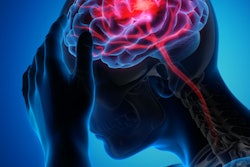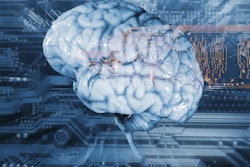
The increased compliance of emergency departments (EDs) with specific imaging guidance for diagnosing transient ischemic attacks (TIAs) has also increased "redundant" imaging, according to a July 28 study in the Journal of the American College of Radiology.
This increase in "redundant" imaging is primarily associated with brain exams, particularly CT, wrote a team led by Dr. Vincent Timpone of the University of Colorado Hospital in Aurora.
"Redundant imaging in TIA is rising," the team wrote. "Most notable is the rate of redundant brain imaging, which is seen in almost one-third of all TIA encounters and occurs 10-fold more often than redundant neurovascular imaging."
TIA used to be grouped along with stroke when it came to imaging, but over the past number of years, professional medical organizations have released TIA-specific recommendations, and compliance with these guidelines has boosted imaging use. But whether some imaging for TIA workup is redundant has not been fully explored, according to the researchers.
"The purpose of this study was to characterize commonly used combinations of imaging examinations in TIA patients discharged from emergency departments across the United States and to identify redundant imaging that could be targeted to reduce overuse," they wrote.
The study included data from the Nationwide Emergency Sample of TIA discharges from U.S. emergency departments between 2006 and 2017, with "redundant imaging" defined as "any duplicate cross-sectional brain, brain-vascular, or neck-vascular" imaging.
Although total TIA emergency department encounters decreased between 2006 and 2017, the percentage of redundant imaging increased from 2.3% in 2006 to 30% in 2017, the group found. In 2017 there were 184,870 TIA discharges from emergency departments, and the most frequently performed redundant imaging among this population was brain imaging (30%); only 2.8% of patients had redundant brain-vascular imaging, and 0.7% had redundant neck-vascular imaging.
| Increases in imaging use for TIA workup between 2006 and 2017 by type of exam | ||
| Type of exam | 2006 | 2017 |
| CT-brain | 41,097 | 134,215 |
| MR-brain | 3,911 | 64,717 |
| CTA-brain | 222 | 24,516 |
| MRA-brain | 2,209 | 23,108 |
| MRA-neck | 1,224 | 16,306 |
| Carotid ultrasound | 5,847 | 37,188 |
The researchers also found that redundant imaging had a negative financial effect. Median charges for a TIA-related emergency department visit were $2,757 in 2006 and $12,045 in 2017. Using Medicare fee estimates, the group found an increased healthcare cost as the result of redundant imaging of $8.7 million in 2017.
How can the problem of unnecessary imaging for TIA workup be addressed? Specific education around the use of CT-brain could help, according to the authors.
"Various TIA guidelines favor MRI over CT as the preferred initial brain imaging assessment of TIA," they wrote. "[But despite] the limited diagnostic value of CT-brain in TIA patients, we found half of the top 10 most common neuroimaging combinations obtained a CT-brain in addition to an MRI-brain. The reasons for such widespread use of CT-brain imaging at facilities with access to MRI are unclear and could be secondary to lack of provider familiarity with guidelines."





















